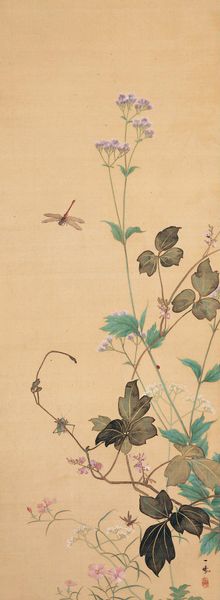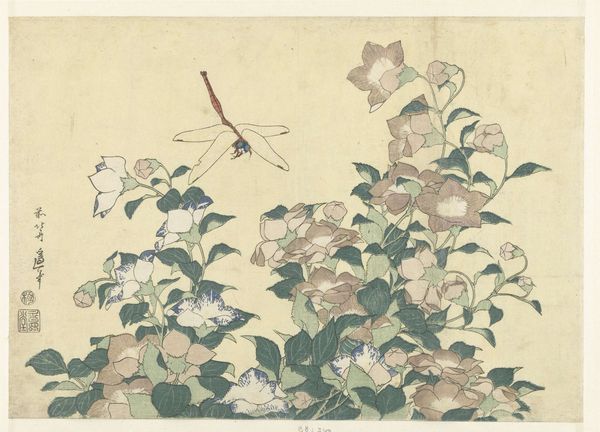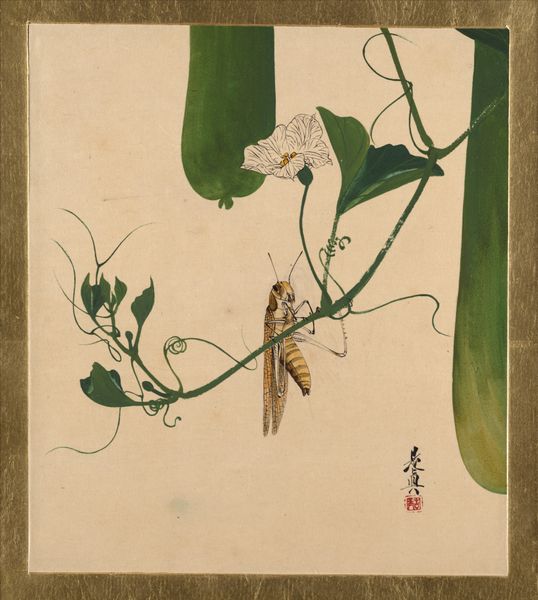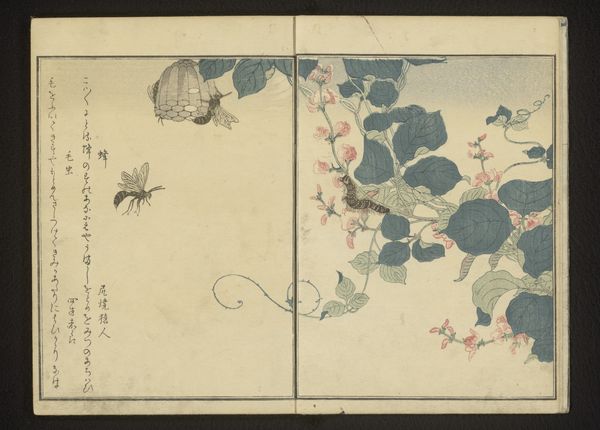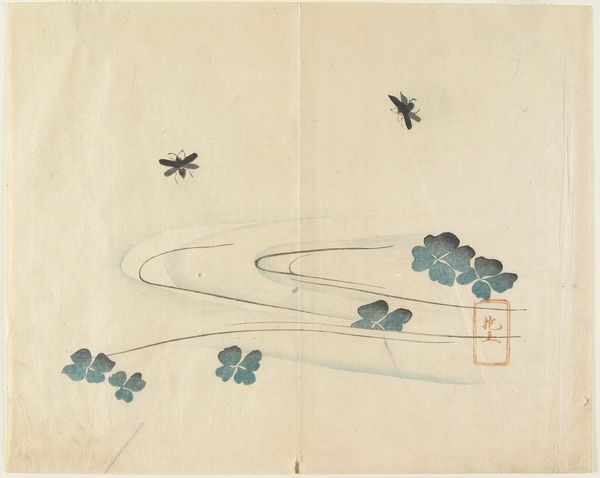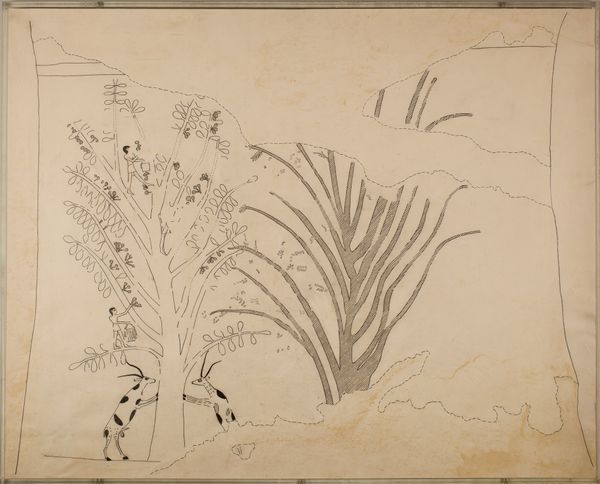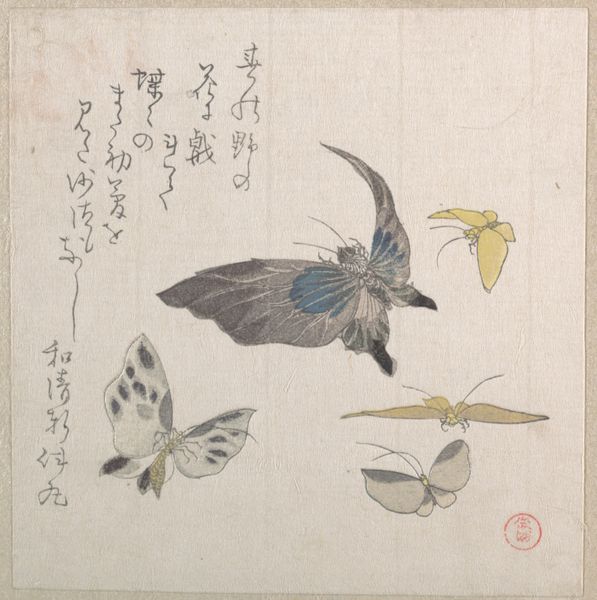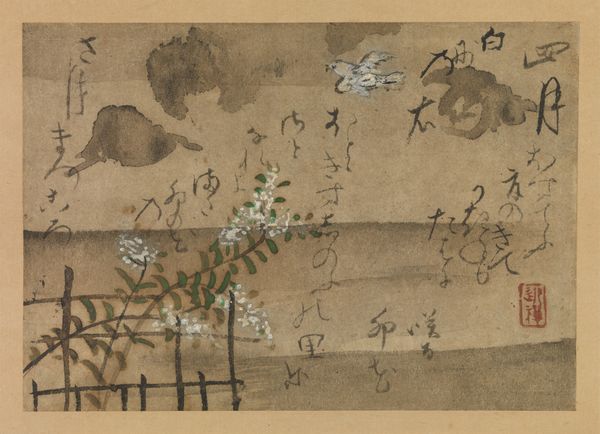
painting, paper, watercolor, ink
#
painting
#
asian-art
#
landscape
#
ukiyo-e
#
paper
#
watercolor
#
ink
#
watercolor
Dimensions: Image: 8 1/4 x 95 in. (21 x 241.3 cm)
Copyright: Public Domain
Editor: We're looking at "Insects and Grasses" by Yamamoto Baiitsu, painted around 1847 using ink and watercolor on paper. It’s full of subtle details, almost like a snapshot of a miniature world. How would you interpret this work in its historical context? Curator: Well, what immediately strikes me is how this image participates in the longer history of depictions of the natural world. In 19th-century Japan, painting insects and plants wasn't just about aesthetics; it reflected a deep engagement with scientific observation as well as literati painting traditions. The meticulous detail points toward an interest in the natural world as an area for scholarly and artistic cultivation, but were such paintings always displayed in a public way? Editor: That’s interesting – it’s delicate and intimate, but were there specific cultural or political associations with these kinds of works? Curator: Absolutely. Consider the Ukiyo-e tradition it echoes, mass produced yet visually sophisticated; consider too, literati painting's ties to a scholar-official class and its expression of personal refinement. Were works like this displayed in public exhibitions to elevate art appreciation among ordinary people? Or circulated privately amongst elites? It shapes how we understand Baiitsu’s role and the work's social function. How might its display affect how it would have been viewed at the time versus how it might be viewed today? Editor: So it is a really interesting combination of artistic, intellectual, and socio-political currents then. That reframes my understanding quite a bit. Curator: Indeed, thinking about how it moved between private and potentially public spaces offers a window into understanding both its creation and consumption, as well as the power structures that facilitated these processes. This isn’t just about the insects, it is a document showing how nature, art, and society intersected. Editor: It's been incredibly insightful to consider its social context and potential viewership at the time of creation, thanks.
Comments
No comments
Be the first to comment and join the conversation on the ultimate creative platform.
